Kathleen Rousseau, 39, easily backs her behemoth of a truck up to the loading docks, loads and secures the truck, then hits the road, maneuvering the massive truck with remarkable precision while enjoying the scenery. The trucker easily spends 60 hours per week on the roads in Canada and the United States. Many are impressed with her driving skills and the physical strength it takes to operate the type of flatbed trailer truck she drives. "It is a very physical job," says the transport driver, who boasts more than 17 years of experience. "When I started, I was specialized in transporting liquids, mainly milk, and it was less demanding. But I love the Canada-US freight business. I never get tired of the beauty of the road, and I have really adopted the lifestyle. Trucking holds a very special place in my heart."
Shortage…of Women?
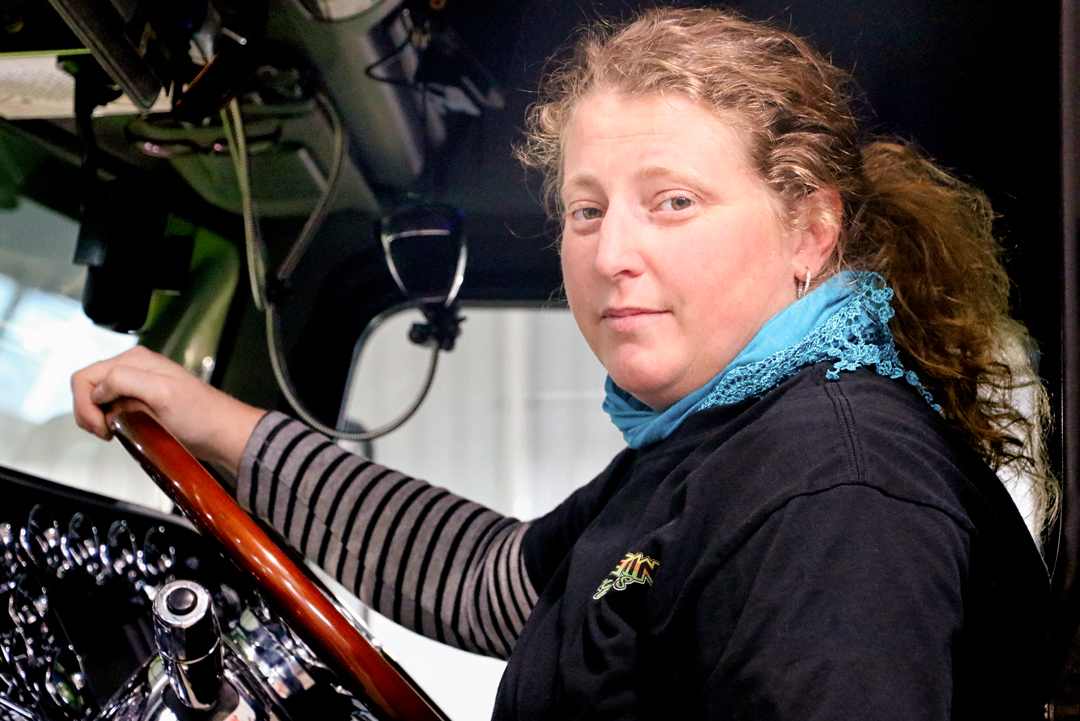 Truck driver Kathleen Rousseau discovered her first kilometers on the road at the end of high school.
Truck driver Kathleen Rousseau discovered her first kilometers on the road at the end of high school.Although women are now well received in the truck driving industry, Kathleen Rousseau says there is still a long way to go in terms of gender equality. According to Trucking HR Canada, a not-for-profit pan-Canadian organization providing human resource solutions for the trucking industry, women represent only 4% of transport truck drivers in the country. According to a 2016 study by the Canadian Trucking Alliance, the industry, which has about 300,000 drivers, will be short about 34,000 workers by 2024. But the number of women is slowly on the rise. An increase of about 12% in recent years, according to the Société d'assurance automobile du Québec (SAAQ). According to statistics from the Centre de formation en transport de Charlesbourg (CFTC) reported by the Gazette des femmes (Women's Gazette), about 10% of the students in training centers are women.
Women represent only 4% of transport truck drivers in the country.
Women in Transport
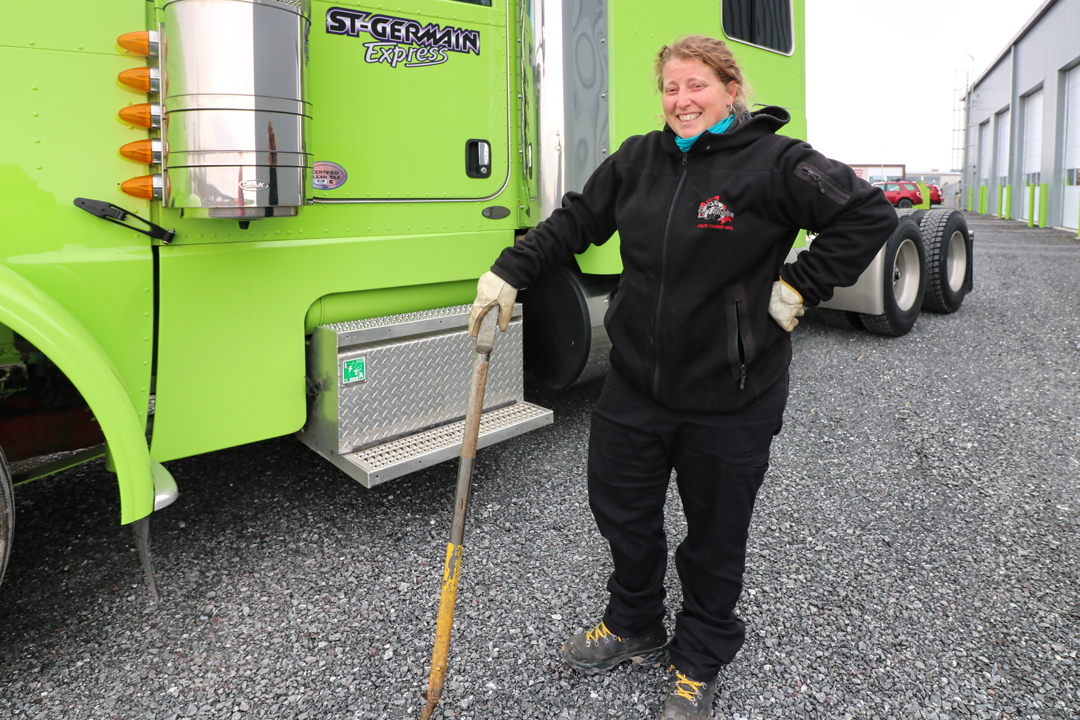 Training in carpentry allowed Kathleen Rousseau to participate at the 2008 Québec Skills Competition (Olympiades québécoises des métiers et des technologies).
Training in carpentry allowed Kathleen Rousseau to participate at the 2008 Québec Skills Competition (Olympiades québécoises des métiers et des technologies).While there have been advances for women in the workplace in recent years, barriers related to systemic discrimination are still present in most sectors, and road transport is no exception. According to a study conducted by the Comité sectoriel de main-d'oeuvre de l'industrie du transport routier (Camo-Route), there is still a gender divide and persistent prejudice, a masculine and homogenous workplace culture, and a concentration of women in administrative rather than operational roles. Kathleen says her journey so far has been overall positive, with no notable bad experiences.
First Love Revisited
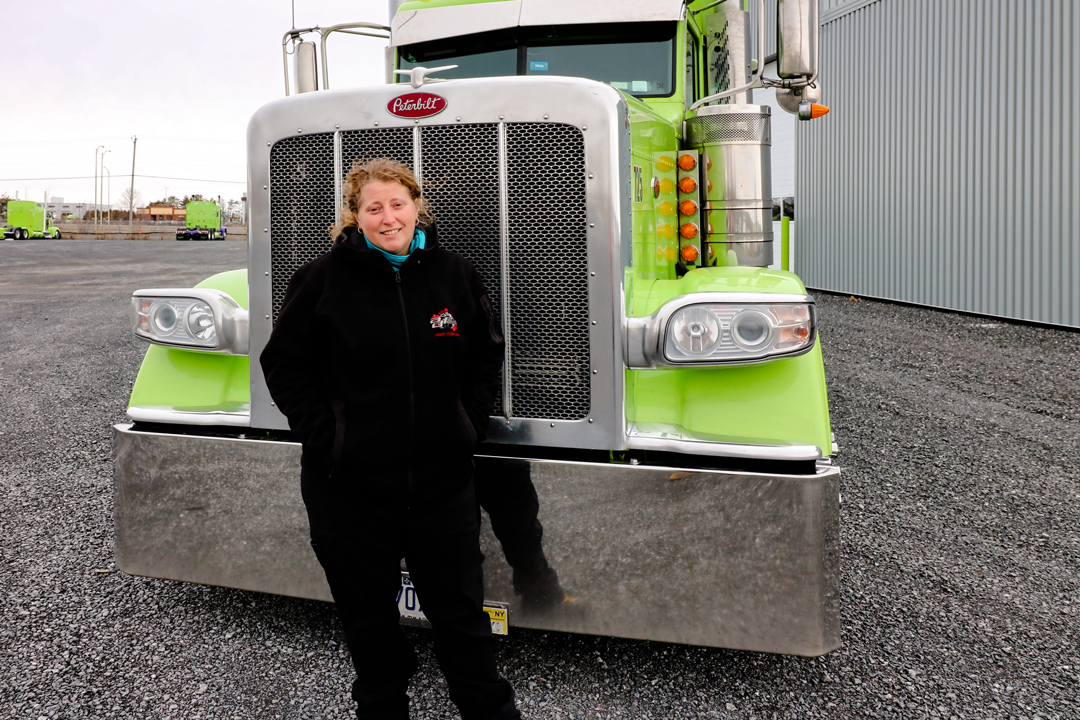 The Skills Competition was a personal challenge for Kathleen Rousseau, who was able to put into practice her skills acquired in carpentry while continuing to practice her trade as a truck driver.
The Skills Competition was a personal challenge for Kathleen Rousseau, who was able to put into practice her skills acquired in carpentry while continuing to practice her trade as a truck driver.With a father who was an insurer, a mother who worked in the retail industry, and an older sister who had a career in sales, there was no reason to believe that Kathleen would choose trucking. In fact, as a teenager, Kathleen juggled her high school classes while working at her parents' store and bakery franchises. Snowboarding, skateboarding, mountain biking, the young woman loves fast-paced sports. Her enthusiasm for road transport grew after she accompanied a trucker friend on a few short trips, two or three days, to the United States. After a brief training, Kathleen worked as a truck driver for four years but lost her job when she was 27.
New Trade: Carpenter
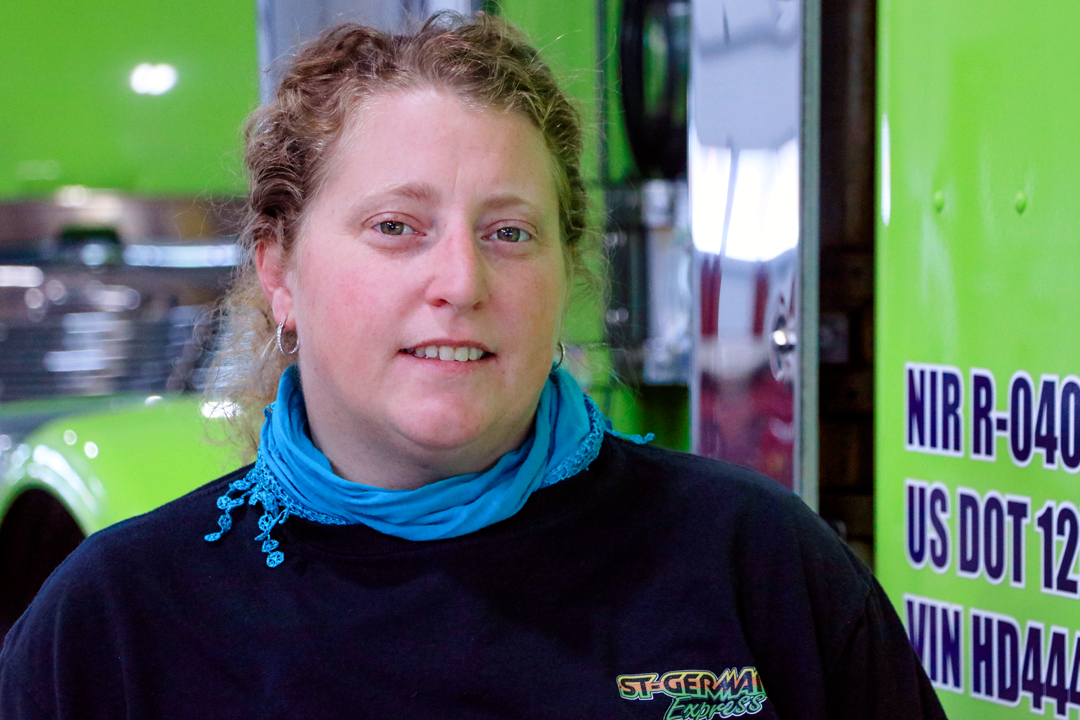 In a field with several male-dominated professions, the division of jobs in road transport based on gender is still too prevalent.
In a field with several male-dominated professions, the division of jobs in road transport based on gender is still too prevalent.She decided to change paths and started a vocational training program in carpentry. The reason behind her choice? "I like construction. I am good with my hands. I need to work in a field where things are always moving and where what I am doing is useful," she says. "I chose a vocational centre near me that offered evening classes." At her school, two women were in a group of about twenty men. One day, Kathleen noticed that her teacher did not invite her to participate in a concrete pouring project, using the excuse that she had a cold. "I was really mad that I missed this opportunity that sometimes only comes around once during the training," she recalls. "I made it clear to my teacher that I was old enough to know when I needed a break. I am not a doormat."
Back on the Road
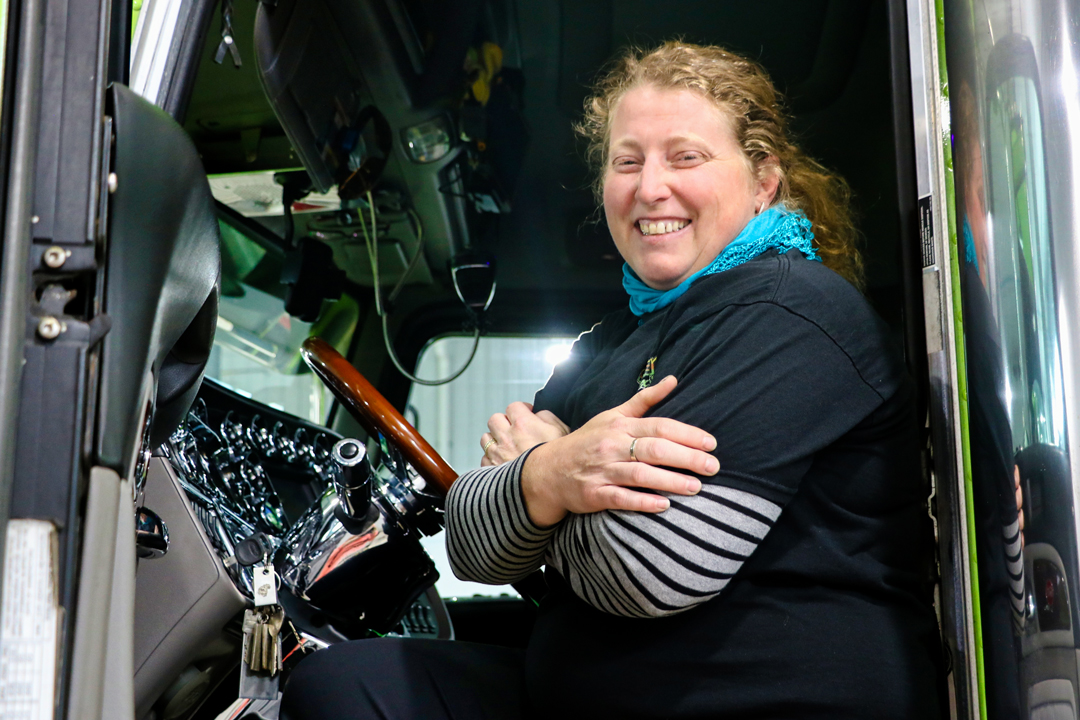 Gender diversity in the transportation sector remains a challenge. There are several initiatives, including Camo-route's "Women Drivers: Objective 10%" campaign.
Gender diversity in the transportation sector remains a challenge. There are several initiatives, including Camo-route's "Women Drivers: Objective 10%" campaign.Her academic journey was spread over 18 months. Kathleen was already working 40 hours a week as a truck driver and did not hesitate to continue down this road. Does she regret her decision to pursue carpentry? "Not at all," she says. "Now I can repair everything and do all kinds of projects around the house I purchased in Sainte-Hélène, in the Montérégie region. For example, I built a beautiful deck."
The Skills Competition Adventure
Kathleen participated in the 2008 Québec Skills Competition, an adventure that she says was "stressful, emotional, and a great accomplishment where [she] did her best" and qualified 10th out of 12 competitors. Initially, as she was taking evening courses, Kathleen and her classmates were not invited to participate in the local competitions. Kathleen claimed her chance to qualify, so she was given a spot on the regional team. "My competitive side saw the Skills Competition as a personal challenge." Kathleen then undertook a brief but intense training session to complete certain modules that would help her complete different construction challenges: window framing, concrete framing, hardwood floor installation, drywall installation, mouldings, etc. The day before the beginning of the competition, the young woman found out that all of the competitors from her school and her teacher, who was also her coach, were planning to meet up at a bar, but she never received an invite. Without thinking twice and determined to be on equal footing, Kathleen made her way to the bar, ordered a drink and joined the all-male group. "You guys didn't feel like inviting me?" she asked them. "The next day, my teacher apologized for excluding me," she recalls.
"My competitive side saw the Skills Competition as a personal challenge."
Women Drivers: Objective 10%
Camo-route's "Women Drivers: Objective 10%" campaign aims to increase the number of women driving heavy trucks to 10% over the next three years. Camo-route and its main partners are working to identify and eliminate obstacles preventing women from joining the trucking industry in Québec. The project aims to change the recruitment, integration and training practices in companies and training centres to ensure more women find employment in the industry.
"I like to wear steel toe boots as much as I like to wear pretty dresses. Slowly, women are integrating the profession, and prejudice is becoming a thing of the past."
